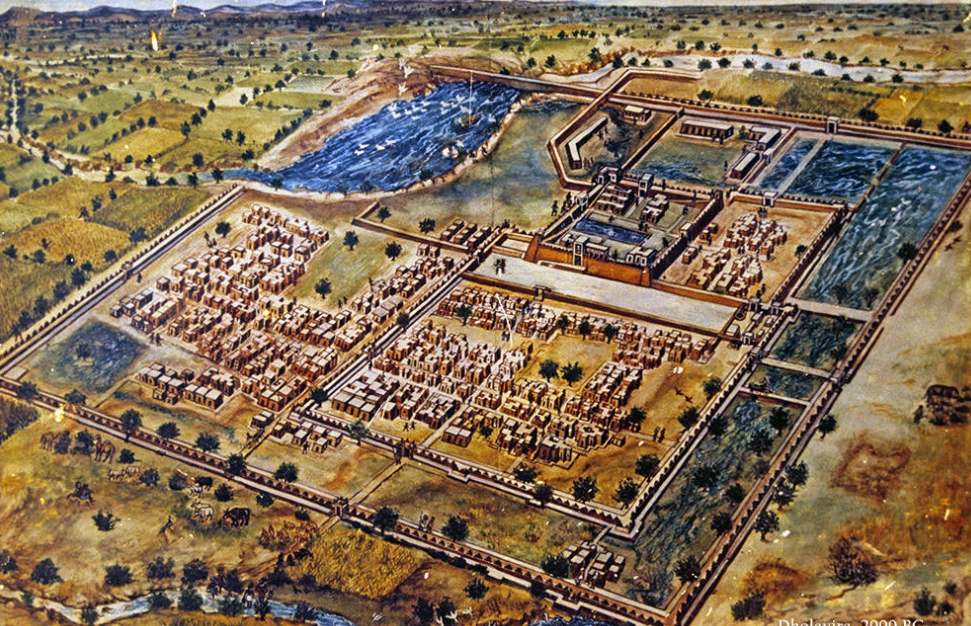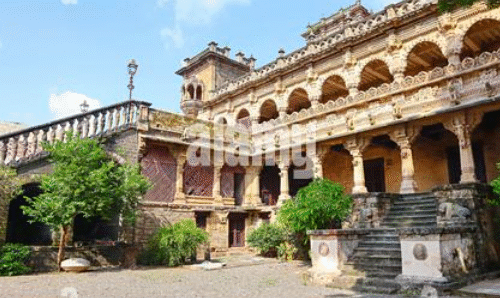Dholavira Fort, located on Khadir Island in Gujarat’s Kutch region, is a spectacular example of the brilliance of the Harappan Civilization. Dating back to around 3000 BCE, this ancient fortified city showcases the early roots of engineering, water conservation, and social planning. Declared a UNESCO World Heritage Site in 2021, Dholavira tells us how advanced and resourceful early humans were. In this article, we explore its rich history, smart design, architectural features, and cultural importance. Let’s dive into the incredible legacy of this ancient wonder.
History of Dholavira Fort
Dholavira thrived during the Indus Valley Civilization, which existed from about 2600 to 1900 BCE. However, archaeological evidence suggests the settlement was active even earlier, possibly around 3000 BCE. It continued to evolve and survive until around 1500 BCE. The Archaeological Survey of India discovered the site in 1967, and full-scale excavations began in 1990. Over time, these excavations revealed a well-planned urban center that was much more advanced than previously imagined.

Unlike other Harappan sites such as Mohenjo-Daro or Harappa, Dholavira stood out for its use of stone in construction and its unique layout. This site represents not just a fort, but a whole city that was intelligently built to meet the demands of its people in an arid, desert-like climate.
Read About:- Ranthambore Fort – A Timeless Symbol of Rajput Strength and History
Location and Geography of Dholavira Fort
Dholavira is located on Khadir Bet Island in the Great Rann of Kutch in Gujarat, India. This location, surrounded by salt deserts and seasonal water channels like the Manhar and Mansar streams, helped protect the city naturally. Its remote position gave the settlement both security and self-sufficiency. Even though it lies in a dry zone, the city builders found ways to harness and manage water with brilliant efficiency.
Thanks to its isolated but strategic position, Dholavira became a key stop along trade routes linking the Indus Valley with Mesopotamia and the Arabian Peninsula. This made it not just a military or residential site, but also a hub for commerce and cultural exchange.
Design and City Layout of Dholavira Fort
1. Triple-Division Urban Layout
Dholavira was designed with three main parts:
- Citadel (Upper Town): This area was likely reserved for elites and administrators. It included fortified walls and entry gates.
- Middle Town: This section had houses, workshops, and public spaces for the general population.
- Lower Town: Artisans, traders, and farmers probably lived here. This area connected the city to its surrounding trade routes.
Each section was built with strong stone walls and featured its own infrastructure. The layout reflects a clear understanding of social order, public need, and safety.
2. Strong Fortifications
Unlike other Harappan cities that used baked bricks, Dholavira used locally available stone for its walls and bastions. The city was protected by thick stone ramparts and gates built to control access. These walls weren’t just meant for defense—they also reflected power and order.
Multiple gates with stone thresholds were built at strategic points, possibly for managing movement and trade. Some of these gates still stand, showing us the engineering skills of those ancient builders.
Water Management and Engineering
One of Dholavira’s most impressive features is its advanced water conservation system, designed for a desert climate with little rainfall. The Harappans used innovative techniques to collect, store, and distribute water.
1. Rock-Cut Reservoirs and Stepwells
Dholavira had over 16 reservoirs—some of them carved into the rocky ground—to store rainwater. These massive tanks collected water during seasonal rains and supplied it year-round. Deep stepwells were also constructed to draw water during dry periods. These features are not only functional but also beautiful to look at.
2. Stormwater Drainage
The city had a well-planned drainage system to remove excess water and prevent flooding. Stone drains connected homes and public buildings, showing a deep understanding of public health and hygiene.
These systems are evidence of advanced hydraulic engineering—rare and remarkable for a civilization that existed over 4,000 years ago.
Cultural and Religious Aspects of Dholavira Fort
Although Dholavira lacks large temples or obvious religious structures, it had a massive ceremonial ground—300 meters long and 50 meters wide. This arena could hold thousands of people and was likely used for rituals, festivals, and public events.

In addition, excavators found fire altars, animal figurines, and artifacts that suggest spiritual practices were a part of daily life. The city seems to have had a balanced approach to religion—neither too dominant nor completely absent.
Dholavira also gave us the longest known Harappan inscription, featuring 10 large characters placed on a wooden board above one of its gateways. While the script remains undeciphered, it shows that communication and writing were central to the city’s administration.
Economy and Daily Life
Artifacts found at the site include beads, tools, pottery, and ornaments. These items tell us that the people of Dholavira engaged in skilled craftwork, trade, and farming. They imported raw materials like carnelian, shell, and copper, and exported finished goods.
There is strong evidence of trade links with faraway civilizations like Mesopotamia. This made Dholavira a global economic player of its time.
Daily life probably included farming, metalwork, pottery making, and trading. The presence of wide streets, homes with attached bathrooms, and designated public spaces suggests a high quality of life.
Decline of Dholavira
By 1500 BCE, Dholavira began to decline. Scholars suggest that a major reason was climate change, including prolonged drought and shifting rivers. Without a steady water supply, the city couldn’t survive. Trade routes also changed over time, reducing its economic power.
However, the lessons from Dholavira’s planning, sustainability, and community management remain important even today.
Visiting Dholavira Today
Today, Dholavira is open to tourists and history lovers. The site is managed by the Archaeological Survey of India. Visitors can walk through its ancient streets, marvel at its stone architecture, and explore its reservoirs and fort walls.
The best time to visit is from October to March, when the weather is cooler. Local guides are available to explain the history and importance of the structures. It’s not just a journey through space, but through time.
Conclusion
Dholavira Fort stands as a symbol of human creativity, resilience, and planning. Its water management systems, social organization, and architectural brilliance tell the story of a people who thrived against the odds. Unlike many lost cities, Dholavira continues to educate and inspire.
For anyone interested in archaeology, history, or ancient technology, a visit to Dholavira is a must. As a UNESCO World Heritage Site, it reminds us of the roots of modern civilization and the incredible achievements of our ancestors. Read More




